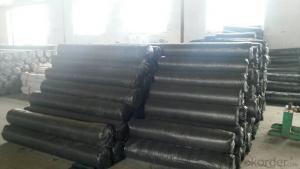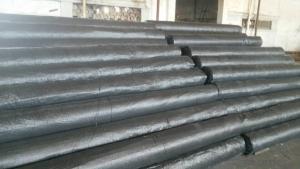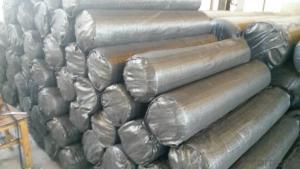Weed Barrier Fabric/ Polypropylene Fabric with Black Color
- Loading Port:
- China main port
- Payment Terms:
- TT OR LC
- Min Order Qty:
- 5000 roll
- Supply Capability:
- 100000 roll/month
OKorder Service Pledge
OKorder Financial Service
You Might Also Like
1. Landscape Fabric Description:
Landscape Fabric is made of environmentally friendly raw materials, pp spunbond nonwoven fabric. It used to prevent the growth of weed, without the use of potentially dangerous chemical sprays or labor intensive hoeing. Once installed, weed mat will continue providing protection for years without maintenance.
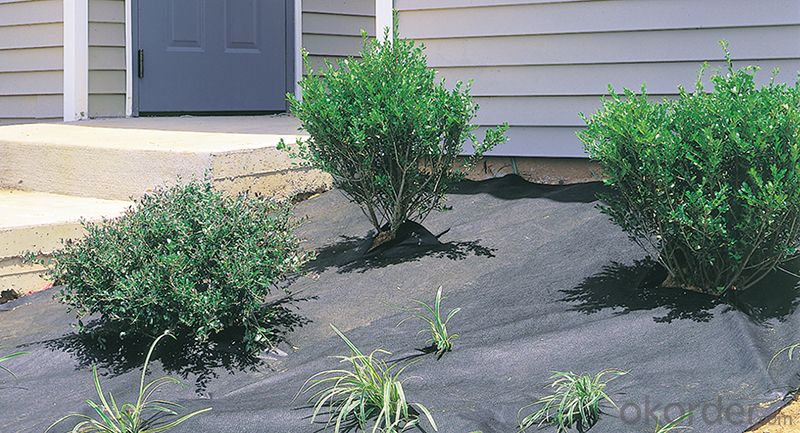
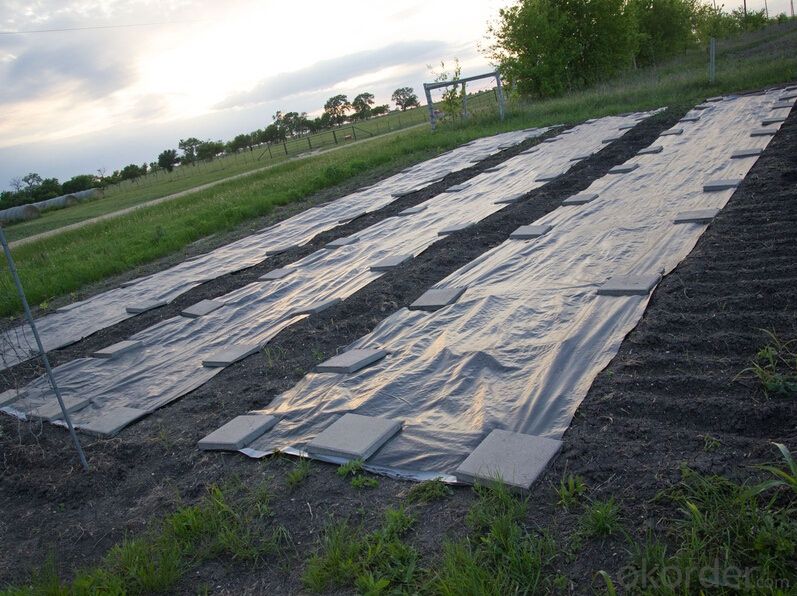
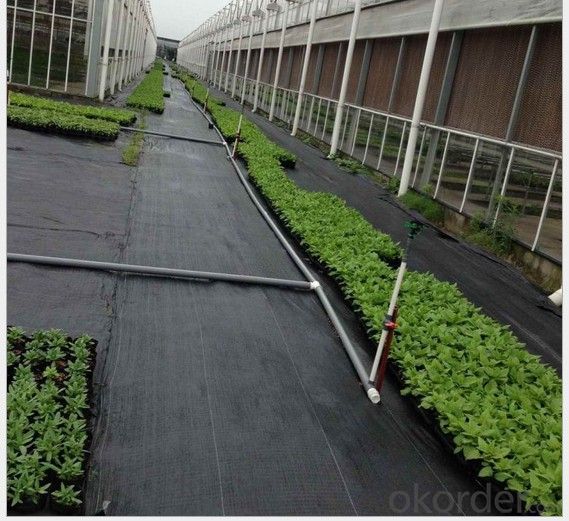
2. Landscape Fabric Feature:
1. Weed suppressant and drainage control landscaping fabric
2. Spun bonded non-woven fabric – will not fray when cut
3. Easy to use
4. Environmentally friendly
5. Allows water, air and nutrients through, suppressing weeds without the use of chemicals
6. Good alternative to Plantex® where cost is a factor
7. UV Stabilised
8. Reduces the level of watering required due to the slower rate of water evaporation
3. Landscape Fabric Function:
1. Cover crops in the ground surface,prevent weeds and against the insect
2. Controlling soil humidity and the temperature
3. Does not affect the growth of the crops
4. Protects plants from harmfully solar radiation
5. Air permeability, water permeability help crops growth.
6. Mothproof, eco-friendly, breathable, anti-bacteria, tear-resistant, fusible
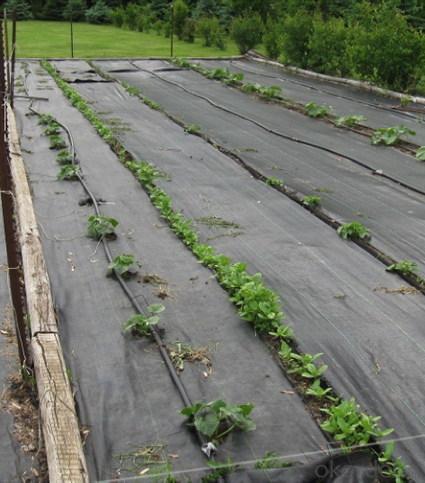
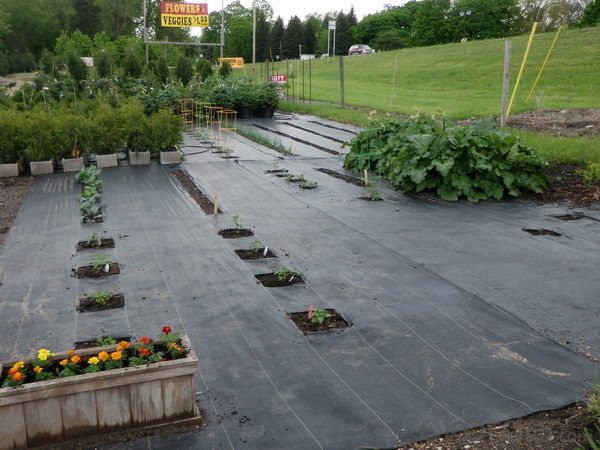
4. FAQ:
Q1: What is your minimum order quantity?
A:The minimum order quantity is 5000 ,but it is negotiable.
Q2:What is your payment terms?
A: T/T,Western Union,Paypal,L/C...
Q3:What is your delivery time?
A:Production time usually costs 2-20 days.
Waiting to cooperate with you!
- Q:Can geotextiles withstand harsh weather conditions?
- Yes, geotextiles are designed to withstand harsh weather conditions. They are made from durable materials that can resist extreme temperatures, heavy precipitation, and UV radiation. Additionally, geotextiles have excellent drainage properties, ensuring they can handle excessive moisture and prevent erosion even in challenging weather conditions.
- Q:Can geotextiles be used in coastal erosion control structures?
- Yes, geotextiles can be used in coastal erosion control structures. Geotextiles are commonly used to stabilize slopes, reinforce soil, and control erosion in various construction projects. In coastal areas, they can be employed to prevent erosion of beaches, dunes, or shorelines by acting as a barrier against the movement of sediment and soil. Geotextiles provide an effective solution for coastal erosion control structures due to their permeability, strength, and ability to withstand harsh environmental conditions.
- Q:What are the applications of geotextiles in road construction?
- Geotextiles have several applications in road construction, including separation, filtration, reinforcement, and drainage. They are used to separate the subgrade soil from the aggregate base, preventing mixing and maintaining the structural integrity of the road. Geotextiles also act as a filtration layer, allowing water to pass through while preventing the migration of fine particles that can clog the drainage system. Additionally, they provide reinforcement to the road by distributing loads and reducing the potential for rutting and cracking. Lastly, geotextiles can be used for drainage purposes, helping to remove excess water from the road surface and subgrade, improving the durability and performance of the road.
- Q:Can geotextiles be used for reinforcement of canal banks?
- Yes, geotextiles can be used for reinforcement of canal banks. Geotextiles provide stability and erosion control, helping to prevent soil erosion and maintain the integrity of canal banks. They can be used to reinforce the soil, distribute loads, and provide filtration and drainage, making them a suitable solution for reinforcing canal banks.
- Q:Are geotextiles commonly used in civil engineering projects?
- Yes, geotextiles are commonly used in civil engineering projects. They are versatile materials that provide various benefits such as soil stabilization, erosion control, filtration, and drainage. Geotextiles are used in applications like road construction, retaining walls, landfills, and erosion control measures, making them an essential component in many civil engineering projects.
- Q:Where is the sale of geotextiles in Tibet?
- Tibet geotextile, a variety of specifications, & lt; Ji Han irrigation pit thieves ghosts and bursonoids p & gt;
- Q:How do geotextiles improve the performance of retaining walls?
- Geotextiles improve the performance of retaining walls by providing reinforcement and stabilization. They act as a barrier between the soil and the retaining wall, preventing soil erosion and reducing water infiltration. Additionally, geotextiles distribute lateral earth pressures more evenly, enhancing the structural integrity and longevity of the retaining wall.
- Q:Non-woven fabrics, geotextiles and geotextile geotextile
- The same material that I specialize in producing
- Q:Geotextile production process
- 1, add polypropylene particles; 2, extrusion continuous fiber filament. Re-stretching and contraction, the fibers cut into short fiber; 3, the fiber is placed in the machine leveling; 4, continue to polymer film. The film is cut into filaments; 5, after stretching again, the filament is wound on the reel. 6, through a variety of independent research and development of the production process, the fiber for acupuncture, followed by thermal bonding. 6, through a variety of independent research and development of the production process, the fiber for acupuncture, followed by thermal bonding. Use this production process to create a geotextile with ultimate strength
1. Manufacturer Overview |
|
|---|---|
| Location | |
| Year Established | |
| Annual Output Value | |
| Main Markets | |
| Company Certifications | |
2. Manufacturer Certificates |
|
|---|---|
| a) Certification Name | |
| Range | |
| Reference | |
| Validity Period | |
3. Manufacturer Capability |
|
|---|---|
| a)Trade Capacity | |
| Nearest Port | |
| Export Percentage | |
| No.of Employees in Trade Department | |
| Language Spoken: | |
| b)Factory Information | |
| Factory Size: | |
| No. of Production Lines | |
| Contract Manufacturing | |
| Product Price Range | |
Send your message to us
Weed Barrier Fabric/ Polypropylene Fabric with Black Color
- Loading Port:
- China main port
- Payment Terms:
- TT OR LC
- Min Order Qty:
- 5000 roll
- Supply Capability:
- 100000 roll/month
OKorder Service Pledge
OKorder Financial Service
Similar products
New products
Hot products
Related keywords


